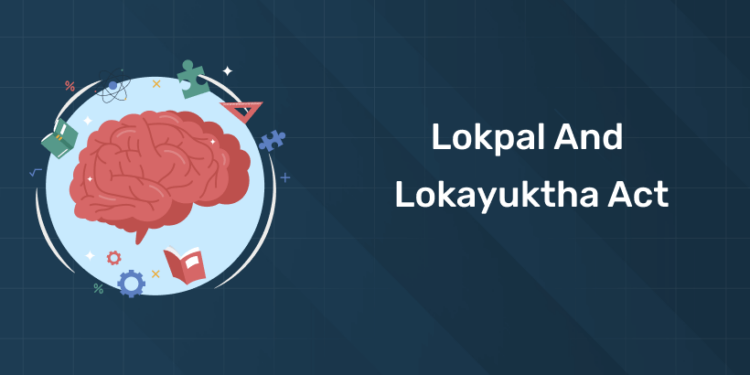Table of Contents
The Lokpal and Lokayukta Act of 2013 is a crucial anti-corruption mechanism in India aimed at combating corruption at the highest levels of government against administrators, including legislators. In this blog, we’ll delve into the definition, historical background, and its role in governance.
Definition and Purpose of Lokpal and Lokayukta
As a watchdog against corruption, the Lokpal looks into claims of allegations by public servants, including the prime minister. Conversely, the Lokayukta promotes accountability and openness in government at the state level.
Historical Background of the Act
1: Who was the first woman President of India?
Although there were up to eight proposals for bills creating anti-corruption bodies between 1968 and 2011, the Lokpal and Lokayuktas Bill of 2011 serves as the foundation for the Lokpal Act as it now exists.
Laxmi Mall Singhvi, a member of parliament, used the term “Lokpal” for the first time in a 1963 discussion on grievance redressal mechanisms.
The First Administrative Reforms Commission of 1966, chaired by Morarji R. Desai, recommended the setting up of two independent authorities, at the central and state level, to look into complaints against public functionaries, including MPs. Later, in 1971 the first Lokayukta was formed in Maharashtra.
The bill was introduced by a Group of Ministers led by Pranab Mukherjee, and the Standing Committee significantly altered it.
With the exception of the Samajwadi party, all of the main political parties supported the amended bill. The Lokpal and Lokayuktas Bill was passed by the Parliament on 17th December 2013 after a nationwide protest led by India Against Corruption, a civil society movement of activist Anna Hazare. On January 16, 2014, the Act became operative and was subsequently revised once in 2016.
Free UPSKILLING Courses!
Take your first step toward mastering in-demand skills, acing interviews, and securing top-tier jobs with Entri's free upskilling courses.
Start Learning!Extent and Authority of Lokpal & Lokayukta
The Lokpal possesses investigative powers over corruption complaints against public officials, including Members of Parliament and Union Ministers. Similarly, at the state level, the Lokayukta fulfills a comparable function.
The Act permits the establishment of an anti-corruption ombudsman at the state and central levels, known as Lokayukta and Lokpal, respectively.
A maximum of eight members plus a chairperson will make up the Lokpal. All classes of public officers, including the prime minister, would be covered by the Lokpal.
However, Lokpal’s jurisdiction does not extend to the armed forces. In addition, even while the prosecution is ongoing, the Act contains measures for the attachment and confiscation of property obtained through corrupt means.
Any investigative body, including the CBI, that the ombudsman refers matters to will be subject to the Lokpal’s supervision and direction capacity.
According to the Act, even before an investigation agency (like the CBI or Vigilance) has started its inquiry, the Lokpal may summon or interview any public servant if there is a prima facie case against the individual. Any CBI officer looking into a case that the Lokpal has referred to cannot be moved without the Lokpal’s consent.
The probe needs to be finished in six months. However, if the Lokpal or Lokayukta receives written justification for the necessity for such extensions, they may grant up to six months ‘ extensions at a time.
The appointment of the Lokpal and Lokayukta
The Prime Minister, the Speaker of the Lok Sabha, the Leader of the Opposition, the Chief Justice of India, and a distinguished lawyer chosen by the President make up the five-person panel that chooses the Lokpal.
The state governor appoints the Lokayukta by consulting with the Chief Justice of the state high court and the leader of the Opposition in the state legislative assembly.
Lokpal and Lokayukta – Quiz PDF
Download Lokpal and Lokayukta Quiz PDF for free!
Free UPSKILLING Courses!
Take your first step toward mastering in-demand skills, acing interviews, and securing top-tier jobs with Entri's free upskilling courses.
Start Learning!Lokpal and Lokayukta Quiz
1. Who used the word ‘Lokpal’ for the first time?
A) Pranab Mukarji
B) Morarji R. Desai
C) Laxmi Mall Singhvi
D) V.P. Singh
2. In which year was the Lokpal and Lokayukta bill passed?
A) 1966
B) 1986
C) 2011
D) 2013
3. Which Indian state was the first to introduce Lokayukta?
A) Kerala
B) Maharashtra
C) Bihar
D) Uttar Pradesh
4. Who headed the India Against Corruption protest which led to the passing of the Lokpal and Lokayukta bill?
A) Anna Hazare
B) Arundhati Roy
C) Medha Patkar
D) Prashant Bhushan
5. When did The Lokpal and Lokayuktas Act come into force in India?
A) January 16, 2014
B) March 2, 2011
C) December 17, 2013
D) October 11, 2012
[Answers 1 – C, 2 – D, 3 – B, 4 – A, 5 -A ]
| Study Notes | |
| Freedom of Information Act | Magna Carta |
| French Revolution | Human Rights |
| Kunjali Marakkar | Synod of Diamper |
| MKSS | Coonan Cross Oath |
| American war of Independence | Technology in space and defence |
Free UPSKILLING Courses!
Take your first step toward mastering in-demand skills, acing interviews, and securing top-tier jobs with Entri's free upskilling courses.
Start Learning!Frequently Asked Questions
What is the Lokpal and Lokayukta Act?
The Lokpal and Lokayukta Act of 2013 is a crucial anti-corruption mechanism in India aimed at combating corruption at the highest levels of government against administrators and legislators, including the prime minister and chief ministers. The Lokpal looks into claims of allegations at the central level, and the Lokayukta promotes accountability and openness in government at the state level.
What are some important dates concerning the Lokpal and Lokayukta Act?
- December 17, 2013 – The Lokpal and Lokayuktas Bill was passed by the Parliament and became an act.
- January 16, 2014 – The Act became operative and was subsequently revised once in 2016.












